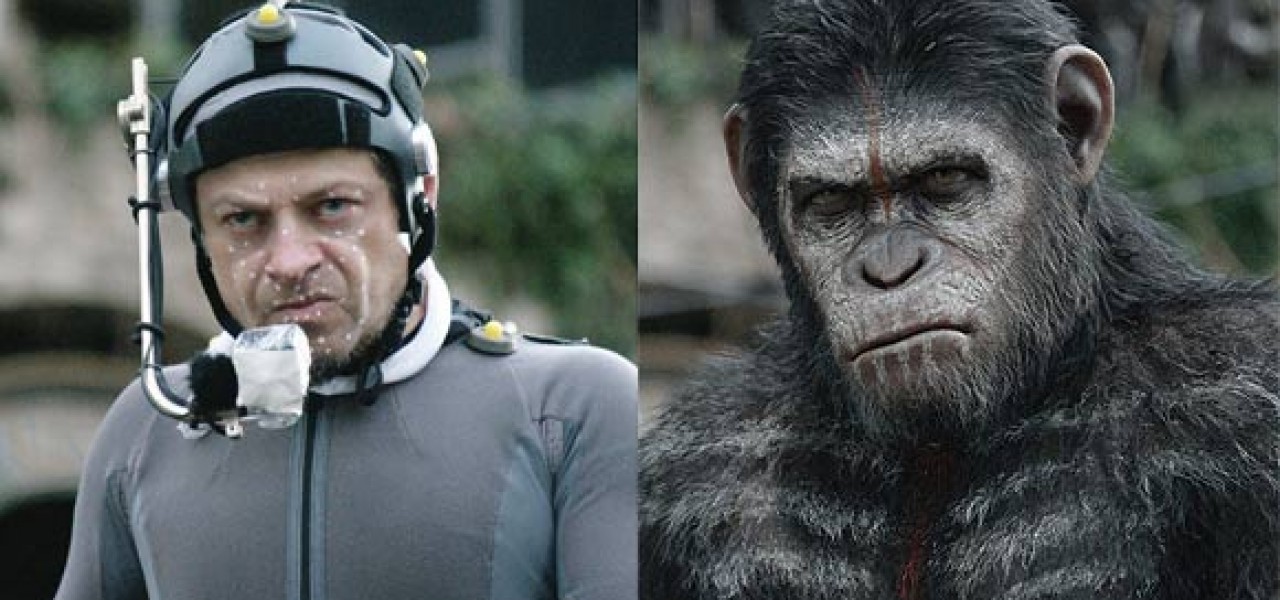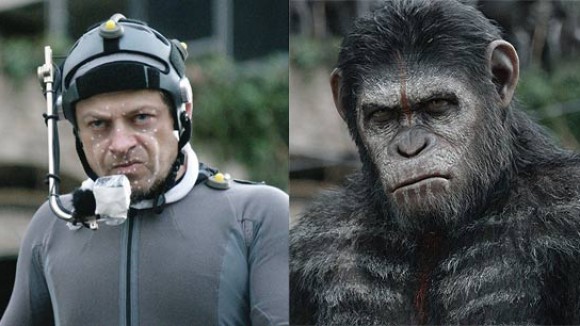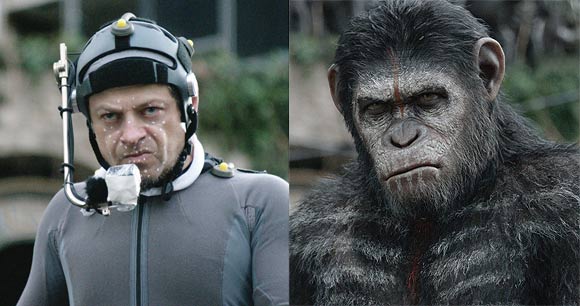

Andy Serkis Is Giving More Credit to the Animators Now

Actor Andy Serkis may have changed his tune somewhat from earlier this spring when he insisted that animators do nothing but add ‘digital makeup’ on top of his acting. In a recent interview with the industry publication International Cinematographer’s Guild Magazine, he presented a more accurate description of the process used in the upcoming Dawn of the Planet of Apes. His words acknowledge, to some extent, the creative choices that are made after his motion-captured performance as Caesar the chimpanzee:
[The technology] has progressed extraordinarily in terms of the fidelity to the authored performance. But it’s only partly to do with technology. It’s more to do with having a team of people who fully understand the interpolation of a performance that they are seeing onscreen. They’re taking the data and wrangling it in a way that honors the performance. The facial pipeline is now so refined by Weta and so understood by the artists that do that very delicate phase between taking the actor’s raw underlying emotional performance and translating it into the actual final rendered character. It’s fully understood, spectacularly so.
Serkis still used the term ‘digital makeup’ in a recent Access Hollywood interview, but notably, he applied it to the process of being outfitted with the reflective dots used to capture his acting data (which is a fair description) and not to describe the work of the animators who help author his performance afterward.
In the same ICG interview, Weta Digital senior vfx supervisor Joe Letteri and vfx supervisor Dan Lemmon discuss the use of facial motion capture on films like Lord of the Rings and King Kong, and their comments suggest that keyframe animation plays a huge role in Serkis’s performance. This is essentially the same perspective put forth by Lord of the Rings animation supervisor Randall William Cook.
Letteri describes further the diligent work of Ape’s animators in this ScienceFiction.com interview:
Matt [Reeve]’s obviously directing it, he’s constructing the film, he’s constructing the narrative, and he’s working with the actors to bring out the moment – what’s the heart of the performance. But, yeah, we have to take that all on board and we have to do a lot of that behind the scenes to present it back to him in a finished fashion…Yeah, it’s a combination of the actors and the animators. The machine is only there as a tool to allow us to store information, amplify things that we do. None of that is machine generated; it’s all done by the artists, either actors or animators.
We did a lot of research and studied a lot of real apes… we videotaped them, we photographed them. You start to pick out their individual personalities. Then what we do is go in and the animators will do studies of these characters. They take little moments that they like and say ‘Oh, look what happened when the baby crawled on the mother’s back here.” And they try to reanimate that so they can understand for themselves how the physicality works and also, once you have that down, why you get that same sense of emotion from them when you see them.
Ib another part of the interview, Letteri says his favorite scene in the new film is the final fight scene, which “was pretty much all computer generated” because of its three dimensional staging.
Bottomline: Serkis’s acting may be at core of his performances, but what appears on screen is still a collaborative effort that is inspired by his performance and not an exact 1:1 replica of it. This much should be clear even from the before-and-after publicity stills that have been published by WETA Digital. Take, for example, the set of images below.

It is obvious in the image with Serkis’s face present that he is looking almost straight-ahead, while in the final frame, the animators have tilted Caesar’s head much farther downward. The animator’s choice is more powerful because it more accurately mimics the head position of the other actor in the scene. Most actors or animators who look at these images would say that there are two very distinct and different choices being made in the body language of the characters—one by Serkis and one by the animators who followed him. A fair acknowledgement of this contribution to the acting process—the animator’s contribution—is essential to the development of motion capture as an animation tool.
(h/t, Todd Vaziri)

.png)